Weather in Hawaii is beautiful most of the time but can be intense and impactful t00. The photo below is from an El Nino year (2018) when Hurricane Lane brought a record-breaking rainfall of 58 inches to Hawaii in just 72 hours.
So when NOAA said last week that El Niño conditions are now impacting the Pacific region, including Hawaii, we took notice. That happened earlier than had been anticipated. Not only that, but we’ve also just been advised to expect a significant deterioration in air quality due to vog from Kilauea.
Here’s what the means to you.
What happens in Hawaii during El Nino.
Basically, it disrupts normal weather and can lead to more rain in certain areas. El Nino is declared when ocean temperatures rise in the central Pacific where Hawaii is located. Wave patterns can change during El Nino, and tropical cyclones in the Pacific can intensify.
NOAA said El Niño is a recurring climate pattern that can change dramatically every 3 to 7 years. One of the extremes is El Niño, and the other is La Niña when cold water in the central and eastern Pacific Oceans rises to the surface. This alternating presence of warm and cold water in this region triggers different yet significant impacts on weather patterns around the world.


Hawaii hurricane season during El Nino years.
For this El Nino year, NOAA says that there’s a 50% chance of above-normal tropical cyclone activity during the central Pacific hurricane season this year, while there’s a 35% chance for near-normal activity and just a 15% chance of a below-normal hurricane season. That means we can expect 4 to 7 named hurricanes in the central Pacific region between now and December 1. The average is 4 to 5. Last year was mainly without any hurricane activity.
Kilauea Volcano eruption resumes VOG into Hawaii’s air.
The last time we had significant VOG, our volcanic smog, was during the eruption of Mauna Loa earlier this year. That was relatively short-lived and didn’t in any way compare to the vog we experienced, especially around 15 years ago.
The vog emanating from Kilauea enters the atmosphere more profoundly, so we can expect worse conditions as a result of the current eruption, which began last week. It’s expected that the VOG will come up the island chain, starting with the Kona area of the Big Island, first, as it moves north.
When there was a brief eruption of Kilauea earlier this year, the VOG was almost immediate here in the north part of the state, more than 200 miles away. It provided some of the worst air quality seen at this other end of the Hawaiian Islands in years.
For those with respiratory conditions and asthma, the VOG goes beyond a mere annoyance. It had been a severe problem in Hawaii years ago during a volcanic eruption, but not so for a long time.
VOG impacts both residents and visitors and appears and affects us similarly to smog. VOG is monitored by the Hawaii Department of Health since it can be particularly detrimental to those with conditions including bronchitis, cardiovascular disease, and emphysema, as well as older adults, pregnant women, and others sensitive to it.
The allergens cause burning eyes, sore throat, hacking cough, sneezing, and congestion.
Mauna Loa VOG was less severe than Kilauea.
It was explained that it emanates from a higher elevation and doesn’t mix as effectively with the air that we breathe at sea level.
Hawaii’s “VOG.”
It’s a mix of various gas emissions, including sulfur dioxide from the Big Island volcanos. VOG in Hawaii was at its worst, and boy, do we still remember it, back in 2008. Since then, it has generally been minimal, with infrequent recurrences.
As Hawaii’s tradewinds are diminishing over time, it increases the likelihood of VOG impacting the islands when it is emanating from the volcanos. The University of Hawaii scientists have noted a significant decrease in Hawaii’s trade winds over the past four decades.
Kilauea volcano eruptions started in 1983.
Kona conditions started bringing vog up the Hawaiian Island chain all the way to Kauai. That has happened repeatedly since then when there is eruption activity. We’re hoping that this eruption will not be a major vog incident as has happened with Kilauea in the past.
VOG and Hawaii visitors.
Check the vog Dashboard for the latest updates during the current eruption, especially should you have respiratory problems. While air conditioning may make VOG more comfortable, it does not filter out harmful emissions.
Get Breaking Hawaii Travel News
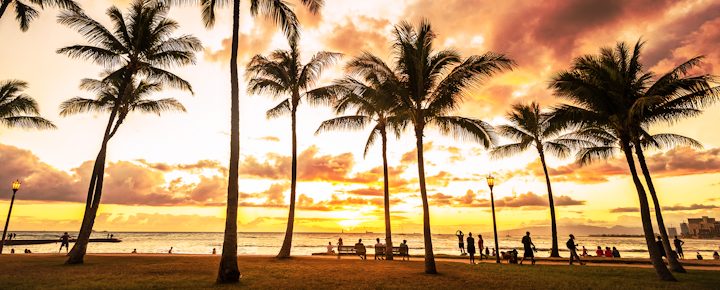
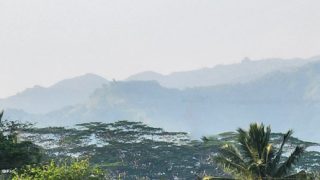
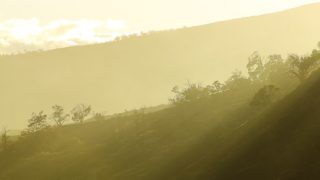

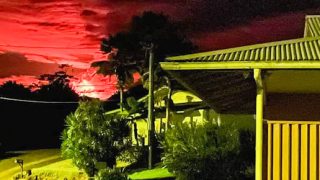
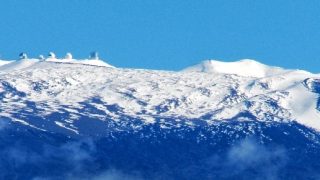
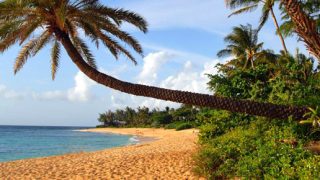
Aloha! Visiting for the first time in late September. A little nervous about the heat as I’m sensitive to it. Will El Nino likely impact general air temperatures there as well?
Thank you! 🙂
Hi Amber.
Good question. We can’t say that we’ve noticed it hotter during El Nino but that is entirely possible. We’ve read both that yes, it does, and no it doesn’t. Maybe others can help too.
Aloha.
I hate to sound like a repeat but I love your coverage of Hawaii and Hawaiian matters. I agree with the locals about some of tourists being idiots but I wouldn’t be. I’d respect the land and the residents. In fact some of the people that have lived there a while probably have interesting stories to tell. I’ve been there 3 times a few years ago. Maui is our favorite.
Hi Ron.
We’re appreciate your input. Being independent content creators in the middle of the Pacific can be a rather isolated experience. The feedback we receive in comments is invaluable to us.
Aloha.
Oh sorry I should have said Aloha in my original post as many times as we said it while we were in Hawaii. So Aloha.
After hearing of an unexpected ‘reduction’ in tourists, assuredly due to more than one specific reason, and now this upcoming “air quality” issue Hawaii may be seeing even more of a reduction of tourism. The next obstacle will be the Hurricane Season, how many and of course How Strong. Without any Explosive Nature of Volcanoes to add to this, what else can help get rid of Tourism totally? I’m sure some of the disgruntled will figure it out!
Hi Ernie.
Just wanted to say thanks for your nearly 1000 comments. We appreciate it!
I thank you for the opportunity to comment as well as to learn more of Hawaii current events from You. I look forward to your site in my mailbox with your Expert Information.
I turned off the air conditioner in Waikiki and let wind come in the hotel from outside. It was pretty strong. A woman at the front desk said people would complain to her if it wasn’t sunny! I never noticed the VOG when I was in Hawaii. We got lots of ☀ sun. When it rained it brief and we got beautiful 🌈 rainbows.
We always love the updates. Great job. Planning on Kauai in November. Really looking forward to it Thanks
Hi Johnny.
Welcome! Thanks for your first comment. We wish you happy travels to Kauai. Let us know if we can help.
Aloha.
Dear BOH,
No questions or comments but just a big thank you for all your wonderful articles, tips, concerns and advice for those of us lucky enough to travel to Hawaii. It is deeply appreciated and we definitely utilize many of the articles.
Mahalo,
Jan
Hi Jan.
Try thanks do much for saying that! It means a lot.
Aloha. Rob/Jeff
Saved for years to go to Maui. Finally going 10 days in September. Seeing bedbugs every airport and united scared to go. I knew it was very expensive. Parking to enjoy beaches will stop tourist industry. . My dream is vanishing quickly